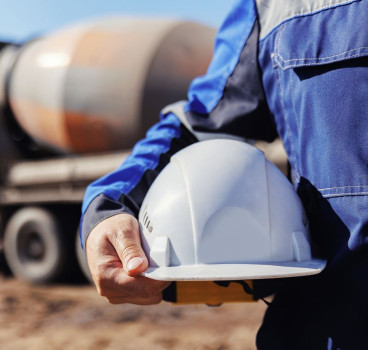Water conservation in the construction industry
While the construction industry is a cornerstone for economic growth and development, it is also a major consumer of water. Its operations, from the production of materials to the completion of projects, necessitate a substantial amount of water, accounting for an estimated 20% of global consumption. This heavy reliance on water raises concerns about water scarcity and environmental sustainability, particularly in regions facing water shortages, writes John Ridgeway.
Concrete production in particular, a ubiquitous material in construction projects, is a significant water consumer. The mixing process requires large amounts of water to hydrate the cement and other components, while curing, the process of hardening and strengthening concrete, necessitates continuous water application to maintain moisture levels.
Beyond concrete production, various other construction activities also consume water. Formwork, the temporary framework used to support concrete during casting, requires constant water for curing. This helps prevent the concrete from cracking and ensures proper hardening. Water pumps and sprayers are used to maintain moisture levels, contributing to the industry's water consumption.
The laying of bricks and tiles, plastering and painting, site preparation tasks such as excavating, grading, and landscaping, and firefighting all require water usage. These activities, though seemingly minor, collectively add up to a significant amount of water consumption in the construction industry.
In light of growing water scarcity concerns, the construction industry faces a pressing need to adopt sustainable water management practices. However, several strategies are being considered by construction professionals, which can be implemented to reduce water consumption and promote a more sustainable approach.
Replacing conventional cement, for example, with alternative materials, such as fly ash and slag, can significantly reduce water requirements. These materials have lower water-cement ratios, meaning that less water is needed to achieve the desired consistency and strength.
Evaporative curing techniques, such as curing blankets or membranes, can minimise water evaporation and reduce water consumption. These methods create a controlled environment that maintains moisture levels without the need for constant water spraying.
Utilising water-efficient pumps, sprayers, and irrigation systems can also significantly reduce water usage during construction activities. These technologies optimise water distribution and minimise wasteful practices.
Capturing and reusing rainwater or wastewater from construction sites is also being increasingly practiced and this can significantly reduce the industry's reliance on freshwater sources. Rainwater harvesting systems can collect rainwater for non-potable uses, such as site irrigation, while wastewater treatment facilities can purify wastewater for reuse in construction activities.
Designing buildings with passive cooling and water-saving features, such as those on the Shard in Lon don (pictured above) is also helping to reduce water consumption during building operation. These features incorporate natural ventilation, reflective materials, and water-efficient fixtures to conserve water throughout the building lifecycle.
Recognising the importance of sustainability in water management, the construction industry is now taking proactive steps to address water consumption challenges. Several organisations are also promoting water conservation within the industry. These include:
- World Green Building Council (WGBC): The WGBC's Global Water Initiative provides standards and guidance for sustainable water use in buildings, encouraging the adoption of water-efficient practices in the built environment.
- Construction Industry Council (CIC): The CIC's Water Wise Construction Charter outlines commitments for the industry to reduce water consumption and improve water efficiency. The charter promotes the use of sustainable water management practices throughout the construction process.
- Water Efficiency Labelling and Certification Scheme (WELS): WELS is an Australian government-backed scheme that provides water efficiency ratings for plumbing products. This initiative helps consumers make informed choices when purchasing plumbing fixtures and appliances.
Effective water management in the construction industry requires collaboration between various stakeholders. Construction companies, government agencies, water utilities, and research institutions play crucial roles in developing and implementing innovative solutions to reduce water consumption and promote sustainable water practices throughout the construction lifecycle. By working together, these stakeholders have shown that they can achieve significant progress towards a more sustainable and water-resilient construction industry.
It all means that the construction industry, with its significant impact on water resources, has a critical role to play in promoting sustainable water management practices. By adopting the strategies outlined in this blog and fostering collaboration among stakeholders, the industry can significantly reduce its water footprint, contributing to a more sustainable and water-secure future for our planet.
Additional Blogs

The silent death of the fixed-price contract
For decades, the fixed-price contract has been the backbone of construction procurement. It promised certainty with a defined scope, an agreed sum and a clear transfer of risk from client to...
Read moreWhy good contractors are walking away from bad projects
There is a growing change happening across the construction industry, one that many clients still have not fully recognised. Highly competent, reputable contractors are increasingly walking away from...
Read more

When fire breaks out who really knows the system
The story that caught my attention recently wasn’t about fire growth or building loss, it was about confusion. Specifically, the confusion faced by the fire service when arriving at buildings...
Read more